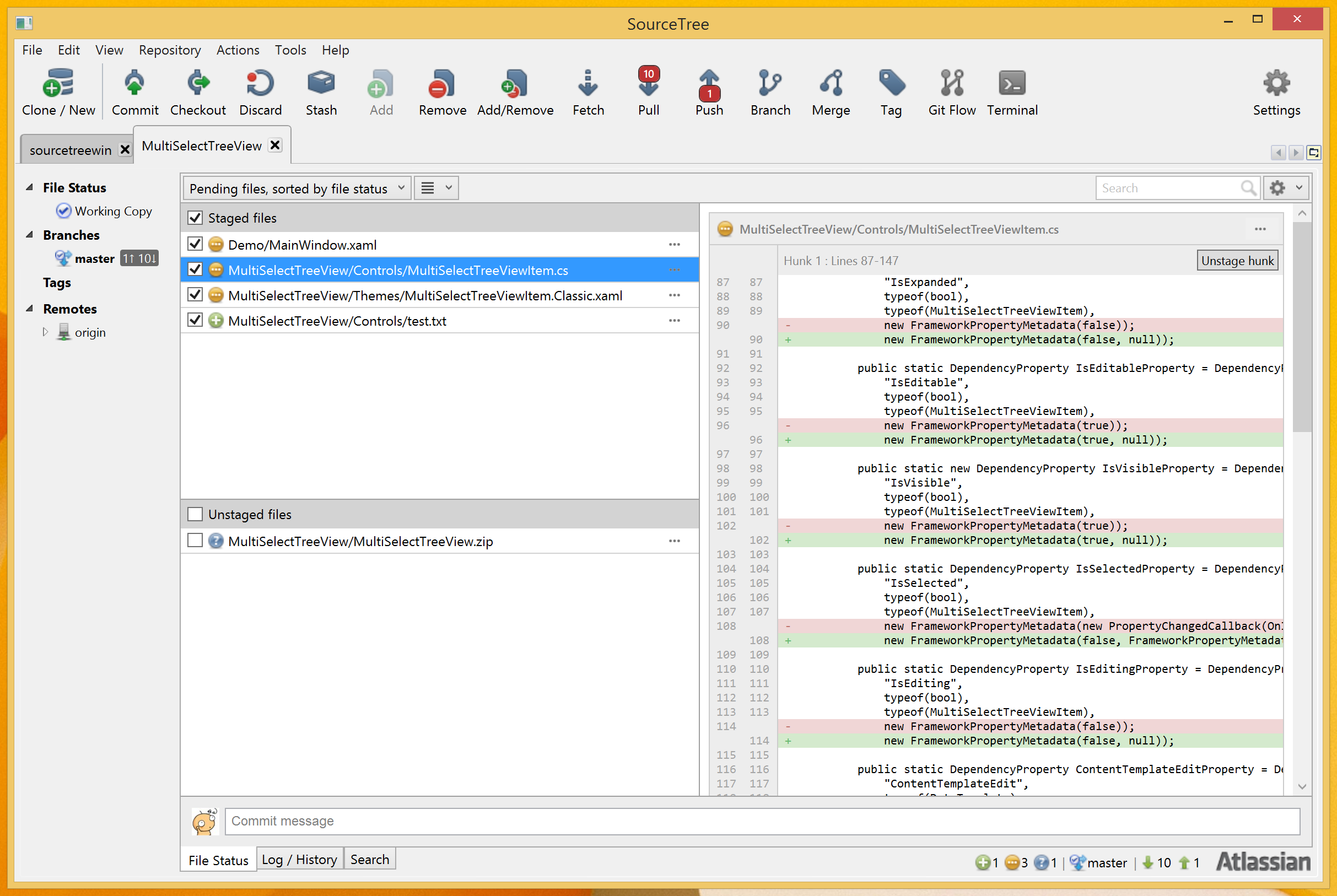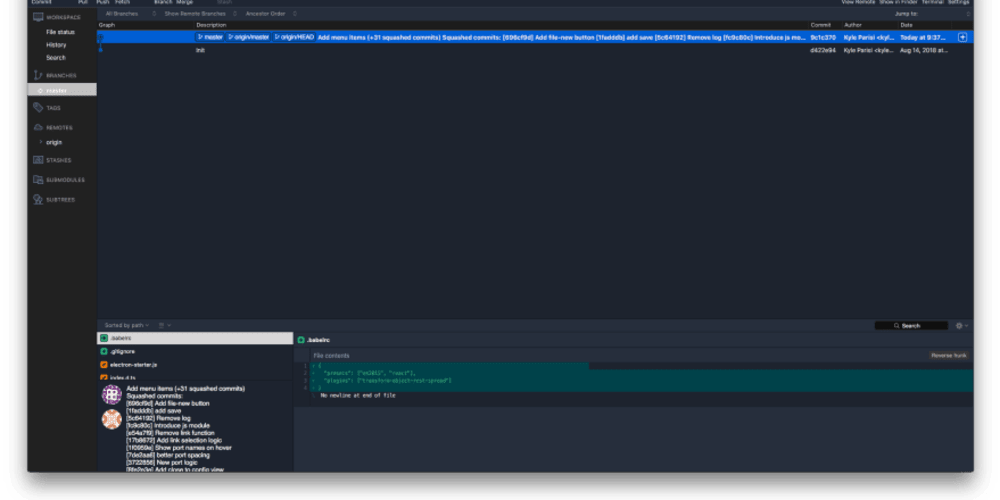
(What do the cool kids call it these days, by the way? Could be a hard disk, could be a solid state disk, so what general term should be used?) If there's already stuff online, it will now also be on your HD. If the BitBucket repository was brand new, then all that you have achieved is that SourceTree is now married to that repository.

Leave the rest alone, click the “Clone” button at the bottom. (I fell for this one a few times.) Paste the clipboard into “Destination Path:” “helloworld”, browse there, copy the whole address bar text, click into “Destination Path:”, the second field from the top, which will generate an autotext that you have to delete. My experiences today have not shown a difference regarding repository type (Mercurial or Git), except I think that the “Staged files” and “Unstaged files” sections are only one section with Mercurial.Ĭreate a folder for your IDE project on HD, e.g. Paste the URL of your BitBucket repository into the field “Source Path / URL:” at the top, e.g. The quasi-window that opens has three tabs (“Clone Repository”, “Add Working Copy”, “Create New Repository”), “Clone” is the one we need and is already selected. To get SourceTree up and running with your new repository (or with a "full" one), instead do this:Ĭlick “Clone/New”, the prominent button at the left top. It can not create a repository on BitBucket for you, so you have to do that on the site.ītw., if you just created a BitBucket repository, the landing page will then offer a “Clone in SourceTree” button which will ultimately just show you an error message because there are no files in the repository yet.
SOURCETREE COPY LOG DOWNLOAD
When you go the BitBucket homepage while logged in, you'll see a big download link for SourceTree, which is not really wired to BitBucket, it just supports it well.
SOURCETREE COPY LOG FREE
We chose BitBucket because it has free private repositories, even for (small) teams. This might well work the same with GitHub, too. I just fought with these things for six goddamn hours, writing a tutorial for our team in the process, thought I'd share.

But it's quite unnecessarily complicated. (I did, because I wanted to use LF all the way.)ĮDIT: It is possible to create a BitBucket repository entirely with SourceTree, and to upload a project with files that so far had not been source controlled. But you might need to use its Git shell to manually prevent CRLF conversion. class, workspace.xml and others ignored right out of the box. EDIT: SourceTree wants you to register after a month or so, and when this didn't work for me (Wrong password!?), I simply switched to a different client that is free for non-commercial use: It even has.


 0 kommentar(er)
0 kommentar(er)
